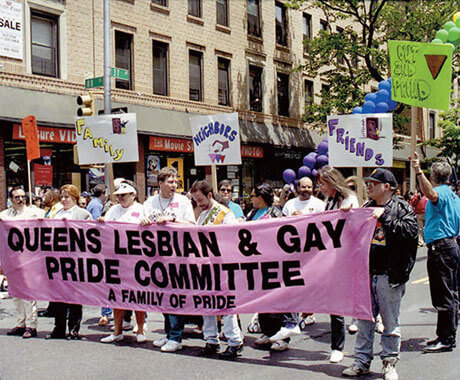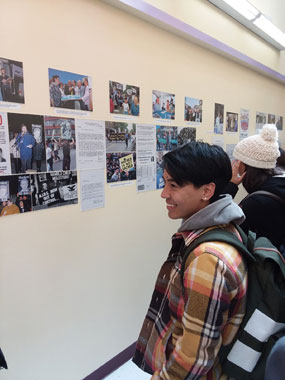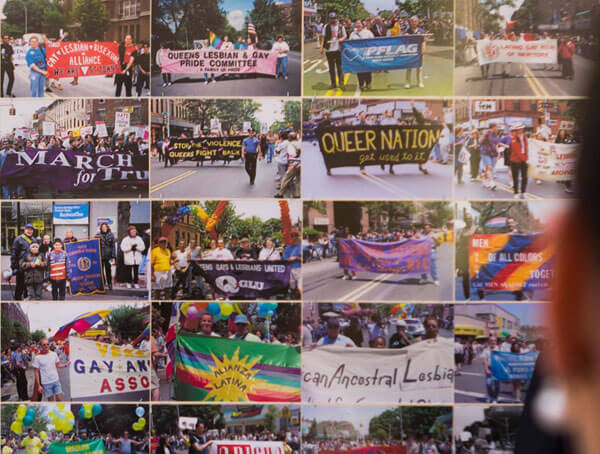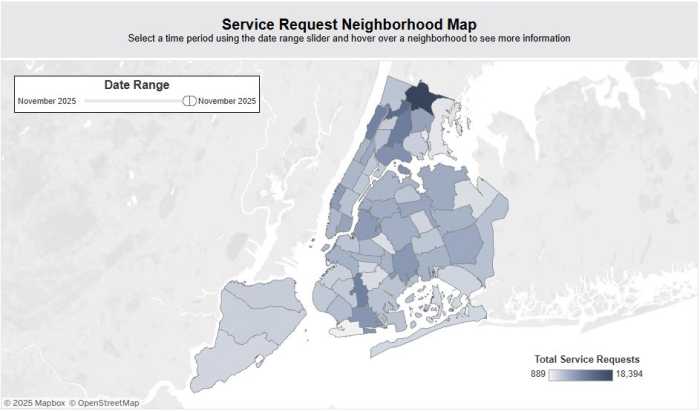By Bill Parry
Hundreds of LaGuardia Community College students stood shoulder to shoulder with the trailblazers of the borough’s LGBTQ civil rights movement Monday afternoon for the opening of a new exhibit called “The Lavender Line: Coming Out in Queens” located in the college’s historic Hall of Flags in Joseph Shenker Hall.
Curators from the LaGuardia and Wagner Archives drew from the personal files of City Councilman Daniel Dromm (D-Jackson Heights), who started the Queens Pride Parade — the first LGBTQ-rights parade to take place in one of New York City’s outer boroughs.
The inaugural parade in 1993 drew only 10,000 marchers, but when it steps off on its 25th anniversary parade in June, it will likely have closer to 50,000, as it is now the second largest pride event in the city each year.
“Having an exhibit like this, having the parade that we have in Jackson Heights fights back against our worst enemy — invisibility,” Dromm said. “Fighting back against invisibility is still the biggest obstacle facing the LGBTQ community.”
City Councilman Jimmy Van Bramer (D-Sunnyside) also contributed materials from his archive, having marched in the first Queens Pride Parade in 1993 as a representative of the Gay, Lesbian and Bisexual Alliance that he began while a student attending St. John’s University.
“There was something deeply special about marching in Queens in the borough I grew up in,” Van Bramer said. “This parade in Queens saved lives. There is no doubt in my mind that there are people living amongst us today, young LGBT folks who were thinking of committing suicide and didn’t think they could be loved. But they went to this parade and saw all of these proud openly gay (people) and it changed their lives forever.”
City Council Speaker Corey Johnson (D-Manhattan) attended the opening of “The Lavender Line: Coming Out in Queens” and he grew emotional as he walked the hallway, reading the captions on all of the photos and remembering back to when he was 16 and was captain of his high school football team 25 miles north of Boston.
“I came out because I was so despondent and clinically depressed and suicidal that I felt if I did not talk about it, if I did not talk about how I was feeling, if I did not verbalize the identity struggle I was going through, that I wasn’t going to survive,” Johnson recalled. “As soon as I came out, I tried to understand the history; the people who came before me; what laid the foundation. I learned about the struggles the community faced.”
When he moved to New York City, he became friends with Dromm and Van Bramer when they were community organizers “before they made history as the first gay elected officials from Queens.” Johnson said the exhibit is not just about LGBT history, but the history of the city and America.
“I stand on the shoulders of the folks whose photos are hanging on these walls,” Johnson said. “It’s our job to continue to tell our stories and inspire young people to know their history and amplify the voices of the people that have made this happen. This exhibit is beautiful.”
Reach reporter Bill Parry by e-mail at bparr










































